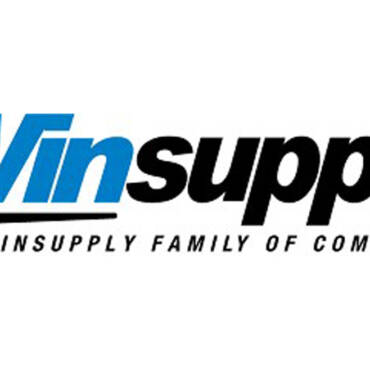✕
A big change is coming to the air conditioning and refrigeration industry. The commonly used synthetic refrigerants known as HFCs are being phased down by the Environmental Protection Agency (EPA) due to their heat-trapping effects, which contribute to global warming. Industry mandates vary, so check the EPA website to find out exactly when changes are coming for your particular refrigeration system. In addition, states may impose further regulations.
Beginning Jan. 1, 2025, the EPA will prohibit the use of refrigerants with GWP above 150 in new refrigeration stand-alone units used in the retail food industry. As a result, many commonly used synthetic blends, like R-449A, will be replaced with low-GWP alternatives such as carbon dioxide (CO2) and A2L refrigerants. We discussed CO2 in previous articles, so in this article, we will focus on A2Ls.
Working with A2Ls
Like CO2, A2Ls are non-toxic, but they are classified by ASHRAE as mildly flammable, due to a burn rate of 10 centimeters or less per second. A2Ls offer a significant advantage: their GWP is dramatically lower than today’s often-used refrigerants, such as R-404A with a GWP of 3,920. Contrast that with A2Ls: R-454C with a GWP of 148, R-455A with a GWP of 145, and R-454A with a GWP of 239.
Several procedures you are familiar with for HFC and HCFC refrigerants also apply to A2L refrigerants. For instance, because operating pressures are similar, the same type of copper piping used for HFCs and HCFCs can be used for A2Ls, and 15% silver brazing alloy still is acceptable for joining copper connections. In addition, the same brazing and piping practices apply as well: flux or flux-coated rod must be used for copper to brass, copper to steel, or dissimilar metals on any joint other than copper to copper, because flux removes oxygen from around the joint, allowing metals to bond securely. When repairing lines on any system, always use nitrogen when brazing to prevent oxidation inside the piping.
Existing line sets may need to be replaced. Due to the mild flammability of A2Ls, always mark line sets with red or other A2L-specific identification and verify that line sizing is correct.
In addition, A2L refrigerants use left-handed threads, meaning the thread pattern of the recovery cylinders will be the reverse of what you are accustomed to. Any vacuum pumps used must also be rated for A2L compatibility, ensuring they are compliant with a mildly flammable refrigerant.
The A2L tanks have a pressure relief valve instead of the rupture disc used with HFCs and HCFCs. Unlike a ruptured disc, which prevents cylinder reuse once the rupture occurs, the A2L tank valve simply releases pressure, preserving the cylinder’s usability.
Charge and Recover
Ensuring that the system is clean, dry, and leak-free is essential. Any air in the system could contain moisture, so the system must be vacuumed to meet the recommended range of 500 microns. Triple evacuation is advised to ensure the system is dry. If charging a blended refrigerant through the low side, use liquid charging adapters to maintain blend integrity.
Also, beware of counterfeit recovery cylinders. Remember, all recovery cylinders must undergo hydrostatic testing for leaks every five years, and the designation — with test pressure and date — is stamped on the cylinder collar with a Department of Transportation label. Other important factors include:
- Recovery equipment must be rated for A2L refrigerants;
- Tanks are rated and identified for A2L refrigerants by a red band and have a pressure relief valve instead of a rupture disc;
- Manifold sets and hoses must be rated for A2L refrigerants;
- Hoses will use left-hand threads for A2L refrigerants;
- Recordkeeping must be maintained, and different refrigerants should never be mixed;
- Recovery cylinders must be rated for refrigerant type and pressure;
- Blended refrigerants recovered from a leaking system may be out of blend proportions; and
- If refrigerant is to be reused, use a clean recovery cylinder.
Mitigating a Leak
A refrigerant detection system (RDS) is often required with mildly flammable refrigerants such as A2Ls. Because A2L refrigerant is heavier than air, it tends to pool. The RDS sensor is located underneath the coils where the refrigerant naturally settles, so it can alert the user to any refrigerant leaks.
ASHRAE requires that the sensor meets these eight points:
- Is self-diagnostic;
- Uses a factory setpoint that is nonadjustable in the field;
- Generates mitigation output within 30 seconds when 25% of the lower flammability limit (LFL) is achieved;
- Detects the presence of the specific refrigerant contained in the system;
- Energizes the equipment’s circulation fans upon failure of a self-diagnostic check;
- Alerts the ventilation system to begin working. The system must remove the leaked refrigerant from the space and provide an exhaust or transfer fan compliant with ASHRAE-Standard 15, Equation 7-10;
- Activates the safety shutoff valves, which must be outside the box that is being conditioned; and
- Ensures technician access for replacement of the RDS components.
Figure 1 illustrates the necessary actions for different-size systems. For instance, for leaks in systems using up to 33 pounds of refrigerant, valves must be closed to isolate the coil from the refrigerant lines connected to the outdoor condenser unit, thereby limiting the amount of mildly flammable vapors that might be present. In larger systems — those starting at 88 pounds with a greater volume of space — not only must the coil be isolated, but ventilation must be provided to rid the air permeated with the leaking A2L refrigerant.
Click figure to enlarge
FIGURE 1: When using R-454C in unit coolers, here are some of the actions required in the event of a refrigerant leak. (Courtesy of Heatcraft)
Safety is paramount when working with flammable substances, but fortunately, personal protective equipment (PPE) has come a long way in recent years. Basically, the same methods used for HFC and HCFC refrigerants are used for A2Ls, with technicians and support staff responsible for using proper protective gear. All staff working on this type of installation should use PPE including safety shoes, gloves, and glasses.
Going Forward
Although R-404A and other high-GWP refrigerants will no longer be manufactured after 2025, reclaimed high-GWP refrigerant will be available at supply houses for service of existing systems.
While refrigeration will remain essential, we also must be good stewards of the planet. Replacing the high-GWP refrigerants with those that are less damaging to the atmosphere — like A2Ls — is an excellent way to fulfill that goal. Make sure you are properly trained to use these mildly flammable refrigerants, however. Use the right equipment, follow all safety instructions, and understand the risks. Taking these steps can prevent injury to yourself and others.
Whether you require installation, repair, or maintenance, our technicians will assist you with top-quality service at any time of the day or night. Take comfort in knowing your indoor air quality is the best it can be with MOE heating & cooling services Ontario's solution for heating, air conditioning, and ventilation that’s cooler than the rest.
Contact us to schedule a visit. Our qualified team of technicians, are always ready to help you and guide you for heating and cooling issues. Weather you want to replace an old furnace or install a brand new air conditioner, we are here to help you. Our main office is at Kitchener but we can service most of Ontario's cities
Source link


